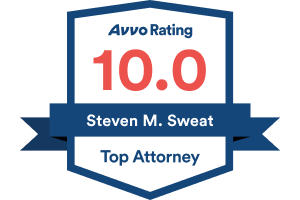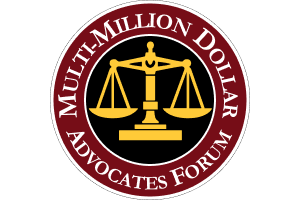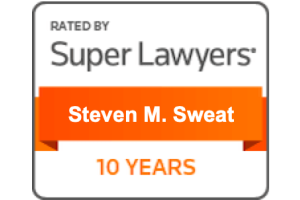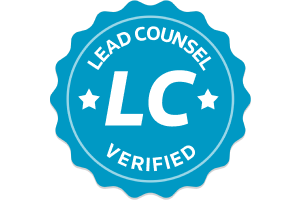- Free Consultation: 866-966-5240 Tap Here To Call Us
Los Angeles Pedestrian Sues After Getting Hit Walking Around Tents Blocking the Sidewalk
In California, pedestrians are supposed to walk on the sidewalks and only cross streets at intersections or marked crosswalks. Pedestrians who are struck by cars while walking on the sidewalk or while crossing at crosswalks or intersections might be entitled to pursue compensation against the negligent drivers who crashed into them. However, what might happen when obstructions on a sidewalk make it impossible for a pedestrian to walk there and force him or her to walk in the street? Recently, a Los Angeles pedestrian filed a lawsuit against the city after she was struck by a car while walking in the street because a homeless encampment blocked the sidewalks.[1]
Woman sues LA following pedestrian accident
On Oct. 4, 2020, Debra Todd, a 64-year-old woman from Valley Village, walked to the 101 Freeway overpass near Gower Street to hand out sandwiches and water to people living in a homeless encampment located there. The sidewalk was obstructed by tents, furniture, and other belongings. Todd said she had no choice but to walk in the street because of the obstructions on the sidewalks. The median in that area was also filled with tents as another part of the encampment. When Todd attempted to cross Gower Street, she and a homeless man were struck by a Nissan being driven by a woman. The woman stayed at the scene and reported she had been driving at about 20 miles per hour. The car did not have any visible damage to its front end.
Todd went to the emergency department to treat injuries to her head, back, hip, leg, and arm. The homeless man who was also struck by the car declined treatment. Todd’s attorney reported that she had suffered a mild traumatic brain injury that could potentially leave her with disabilities. She filed a lawsuit against the City of Los Angeles in which she asserted several negligence causes of action.
In her lawsuit, Todd alleged that the city had allowed the homeless encampment at the 101 Freeway overpass to exist for a long period despite the obstructions to the sidewalk for pedestrians and the dangers to both pedestrians and drivers in the area. She also alleged that the city negligently failed to post warning signs for drivers about the heavy foot traffic in that location.
Ordinance amended
On July 2, 2021, Mayor Eric Garcetti signed a new ordinance that amended Los Angeles Municipal Code Sect. 41.18.[2] This law will allow the Los Angeles City Council to remove homeless encampments that are located within 500 feet of freeway overpasses or that pose a threat to public safety. The council will have to vote before enforcement action can be taken to move the homeless encampment located at the 101 Freeway overpass, however. Todd’s lawsuit was filed a few days after the ordinance was signed. The city did not respond to questions about the lawsuit. A spokesperson stated they needed time to review the complaint.
Sidewalk claims against a city government
Most pedestrian accident claims are filed against motorists who negligently strike people who are crossing the streets at intersections or marked crosswalks. However, a pedestrian who is injured when a vehicle drives on a sidewalk might also file a claim. Claims might also be filed against the city or another property owner when a defect in a sidewalk causes an injury. This type of claim is based on a theory of premises liability. Property owners are responsible for maintaining their property in a way that protects the safety of people who are lawfully present. If a defect or hazard exists that the property owners either know about or reasonably should know about, the property owners have a duty to warn others about its existence and to promptly correct or repair it.
In Todd’s case, she filed a lawsuit against the City of Los Angeles since the city owns the sidewalks along the 101 Freeway overpass along Gower Street. She argues that the city has known about the existence of the homeless encampment for a long time and the fact that its presence obstructs the sidewalks, potentially endangering pedestrians and motorists passing through the area. Despite its knowledge, however, Todd argues that the city did nothing to correct the dangerous condition or to warn drivers or pedestrians about it.
While Todd argues that the encampment forced her to walk in the street, she was struck by a car while attempting to cross the street instead of while she was walking alongside it. It is unclear whether that fact might come into play in her lawsuit against the city. It is likewise unclear whether she attempted to cross at an intersection. In her statement, Todd said that there were no lights or stop signs at Gower, which is where she was hit.
Premises liability claims against the government
Like other property owners, the government has a duty to maintain the public property in a manner that protects the safety of the public. This duty includes a duty to repair road and sidewalk defects that could foreseeably cause injuries to pedestrians and motorists. However, if the defect existed for a short enough period of time that the government could not reasonably have discovered it through an inspection, an injured plaintiff might not be able to recover compensation.
In some sidewalk claims against the government, the government will argue that the defect was trivial as a matter of law.[3] If the court agrees that the hazardous condition was trivial, a claim might be dismissed. Claims against the government for personal injury or death also have special rules under the California Tort Claims Act.
Requirements under the California Tort Claims Act
Under the California Tort Claims Act, people have much less time to file a claim against the government than they would have to file a claim against any private entity.[4] Under Cal. Gov. Code 911.2, claims must be filed with the government no later than six months after the date the injury accident occurred.[5]
By contrast, the personal injury statute of limitations in California for claims against private parties is two years from the date of injury. When a municipality or state governmental agency is at fault for causing an accident, this means that an injured victim must act quickly to file a claim. If he or she fails to file a governmental claim within six months, the victim will be barred from pursuing compensation through a lawsuit against the government.
Once a claim is timely filed with the government, the government will then investigate and determine whether it will pay the claim or deny it. Once the government receives a claim, it will have 45 days to make its decision. However, it can file for an extension of that period. If the government decides to dispute or deny the claim, the individual will then be able to file a lawsuit in court against the responsible agency.
Get help from an experienced personal injury attorney
If you have sustained injuries on a government-owned property because of an unrepaired hazardous condition, you might be legally entitled to pursue compensation for your losses. However, the special requirements of the Tort Claims Act make it important for you to speak to a personal injury attorney as soon as possible after your accident. To learn more about your potential claim and the rights that you might have, call the Steven M. Sweat Personal Injury Lawyers today at 866.966.5240.
Sources
[1] https://www.latimes.com/california/story/2021-08-04/woman-sues-after-being-hit-by-a-car-on-street-where-homeless-encampment-blocks-the-sidewalk?utm_source=Justia%20Blogging%20Ideas&utm_medium=email&utm_campaign=7309150ce5-blogging_ideas_injury_20210804&utm_term=0_dba88020e6-7309150ce5-406640669 [2] https://clkrep.lacity.org/onlinedocs/2020/20-1376-S1_ord_draft_7-02-21.pdf [3] https://www.victimslawyer.com/sidewalk-accident-claims-in-california.html [4] https://leginfo.legislature.ca.gov/faces/codes_displayText.xhtml?lawCode=GOV&division=3.6.&title=1.&part=3.&chapter=2.&article=1. [5] https://leginfo.legislature.ca.gov/faces/codes_displayText.xhtml?lawCode=GOV&division=3.6.&title=1.&part=3.&chapter=2.&article=1.












